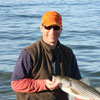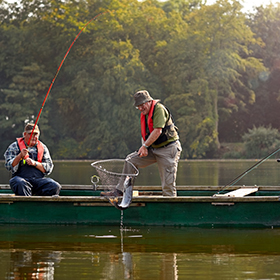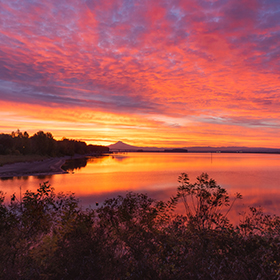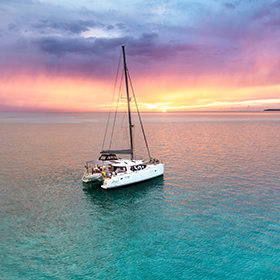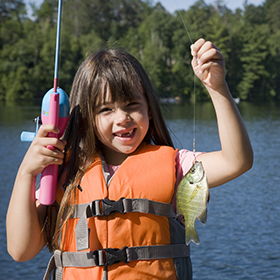A fun day of ice fishing can turn sour very quickly, so here are 5 topics that will turn frowns upside down.
"No one will be happy until someone loses an eye" goes the saying, and that's what makes ice fishing safety an important topic. A fun day of ice fishing can turn sour very quickly, so here are 5 topics that will turn frowns upside down.
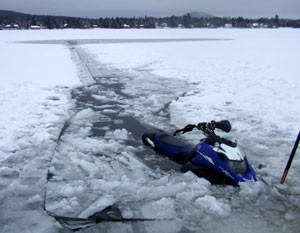.jpg)
-
Falling through the ice. I said falling through the ice would never happen to anyone I know, and then my sister went through a soft spot...
Action points: Make sure the ice is a minimum of 6 inches thick for walking, 8 inches for a snowmobile and 12 inches for a vehicle. Carry a 50 foot rope with a buoy at one end to toss to a victim while you’re in a safe spot. Victims should flare his arms to keep from sinking, then try to get horizontal in the water and pull up on the solid ice. Set up away from springs and wear a whistle: it’s easier to hear a whistle blast Frostbite than someone yelling in the wind.
-
Hypothermia means losing your body heat faster than you generate it.
Action points: Wear layers! If you’re dry you’ll stay warm. Begin with a base layer that wicks perspiration away from your body. Use a combination of natural and synthetic layers, and be sure to cover your head and your hands. Wear a full face mask on cold and windy days.
-
Frostbite is when your skin freezes. To identify frostbite look for skin to turn from red to white. The skin also gets hard.
Action points: Wear loose clothing so circulation isn’t restricted and wear ample layers. If frostbite is suspected, begin a re-warming process with extra clothing, blankets, or warm food/drink. DO NOT RUB the area and do not use artificial heating sources (like a camp stove, heating pad or hot water).
-
Dehydration comes unexpectedly. Moisture is absorbed by your layers and since it’s cold outside folks don’t feel parched. Cumbersome bathroom breaks make folks avoid drinking water.
Action points: Consume a normal 64 ounces of water per day, more if you’re skating or drinking caffeinated/alcoholic drinks. Dark yellow indicates dehydration.
-
Sunburn occurs not because the sun’s rays are as intense as they are in the summer but due to the reflection on the snow and the ice.
Action points: Wear sunglasses and sunscreen.
An ounce of prevention is worth a pound of cure. Catch ‘em up!

